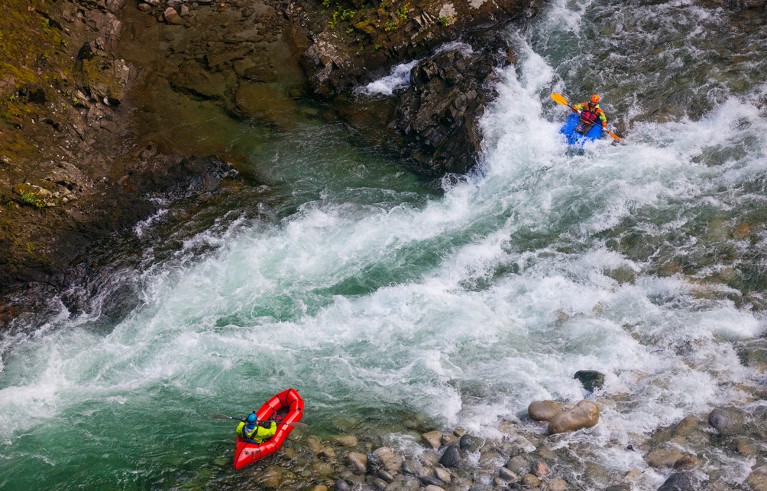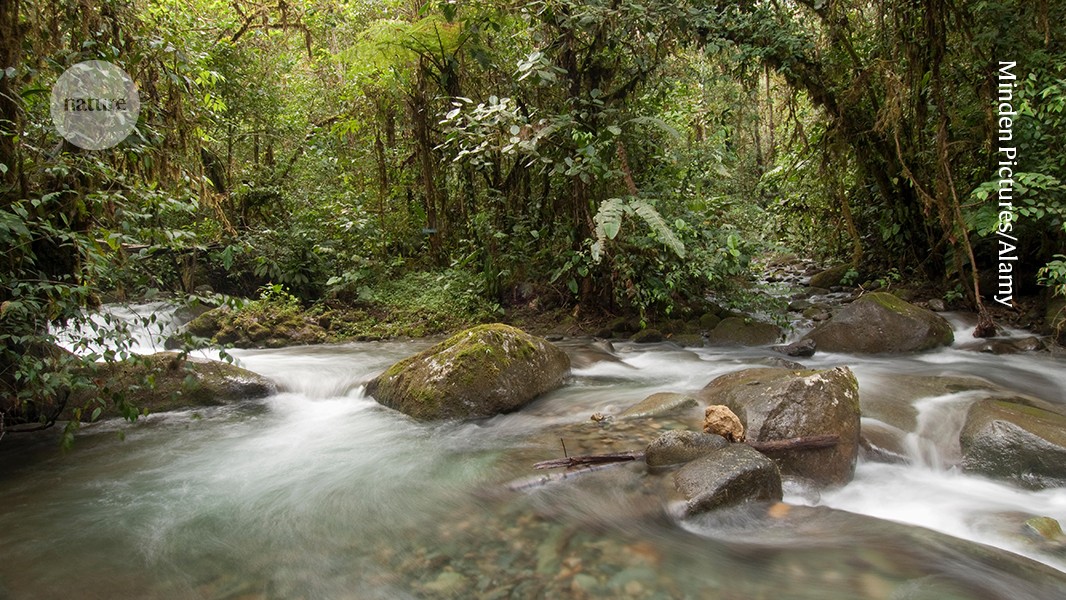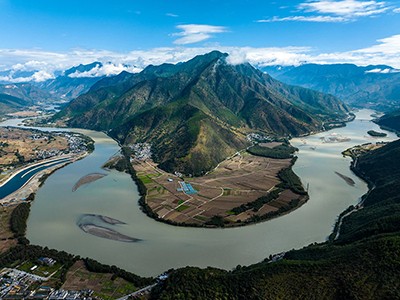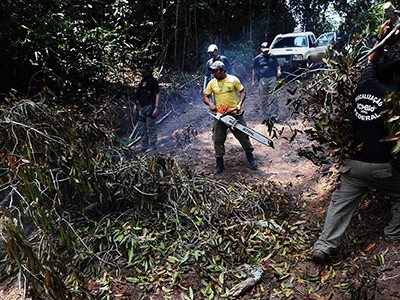Is a River Alive? Robert Macfarlane Hamish Hamilton (2025)
Thirst: In Search of Freshwater Wellcome Collection, London 26 June 2025–1 February 2026
Thirst: In Search of Freshwater Foreword by Robert Macfarlane. Wellcome Collection (2025)
When Robert Macfarlane, a nature writer, was walking with his son to school, the boy asked him the title of his current book project. “Is a River Alive?” Macfarlane replied. “Well, duh, that’s going to be a short book, then, Dad,” said his son, “because the answer is yes!”
How a vast digital twin of the Yangtze River could prevent flooding in China
As a boy, Macfarlane felt the same about rivers. But, as an adult, he developed doubts. In the book’s introduction, he describes how hard it was for someone like him, who had been raised on rationalism, to imagine that a river could be alive beyond the life it sustains. “It requires unlearning, a process much harder than learning,” he writes. “We might say that the fate of rivers under rationalism has been to become one-dimensional water. Rivers have been systematically stripped of their spirits and reduced to what Isaac Newton called ‘inanimate brute matter’.”
His childhood belief returned while he was researching the book. In it, he refers to rivers “who” flow, rather than rivers “that” flow. Macfarlane’s view seems akin to that of the political scientist and anthropologist James Scott: his last book, In Praise of Floods, published in February after his death in his eighties, argues controversially that crucial rivers, such as the Colorado River in the western United States and the Irrawaddy River in Myanmar, should not be damned by being dammed.
In Scott’s words: “Rivers, on a long view, are alive. They are born; they change; they shift their channels; they forge new routes to the sea; they move both gradually and violently; they teem (usually) with life; they may die a quasi-natural death; they are frequently maimed and even murdered. Each river, though subject to the same hydraulic laws, has its own unique personality and history.”
Rivers under threat
Macfarlane ranges, compellingly, further afield than Scott’s relatively academic study — not only geographically, but also intellectually and emotionally. Driven by his concern over human damage to rivers in England, where he lives, he journeys at length alongside and along other rivers, in the company of scientists, environmental activists and diverse adventurers. Sometimes paddling by kayak, even dangerously over rapids, he experiences three, very different, threatened riverine landscapes — in Ecuador, India and Canada.
The Burning Earth: how conquest and carnage have decimated landscapes worldwide
The first is a cloud forest in the Andes Mountains: Los Cedros, the ‘Forest of Cedars’, which forms the headwaters of the Rio Los Cedros, which eventually reach the ocean through another river. Los Cedros is threatened by companies eager to pursue copper and gold mining.
The second includes the rivers, creeks, lagoons and estuaries of the city of Chennai on the coast of the Bay of Bengal. They are deeply polluted by toxic industrial products and exposed to a brutal cycle of droughts and floods caused by monsoons and cyclones.
The third is Nitassinan, homeland of the Innu people. It is a wild interior through which flows Mutehekau Shipu, the Magpie River, which reaches the sea at the Gulf of St Lawrence, some 1,000 kilometres northeast of Montreal. It is constantly at risk from dam-building.
Rivers in time
As a spin-off from his newly released book, Macfarlane also provides a foreword to a diverse collection of short writings about water. Thirst was commissioned by the Wellcome Collection in London, to accompany its exhibition of the same title.
The exhibition is divided into sections: Aridity, Rain, Glaciers, Surface Water and Groundwater. Surprisingly, rivers are not given their own space. But they flow through the exhibition, which begins with a Babylonian clay tablet from around 1900—1600 bc, on which the Epic of Gilgamesh is inscribed in cuneiform. It describes the first war waged over water in ancient Mesopotamia, the ‘land between rivers’ — the Tigris and Euphrates. Later comes a section on the Iraqi Marshes, including filmed interviews with their inhabitants. In the late 1980s and 1990s, the swamps were drained to about 10% of their original size by the regime of dictator Saddam Hussein, to evict the people living there — but have since been partially rejuvenated.
Videos feature people across the globe wading speechlessly through their houses after flooding, exploring human experiences of the phenomenon. A satirical cartoon from 1828, entitled ‘Monster Soup commonly called Thames Water’, shows a horrified woman peering through her microscope, studying numerous creatures swimming about in a drop of drinking water from London’s River Thames. Another drawing, made in 1931, shows a cross-section of an artesian tube well drilled beneath the Wellcome Collection building into one of London’s many underground rivers.

Kayakers paddle through rapids in the Chehalis River in Canada. Credit: Christopher Kimmel/Getty
Other contributors to the exhibition book, some of whom also feature in the exhibition, include science-minded thinkers — such as environmental activist Vandana Shiva, who founded Navdanya, an Indian non-governmental organization that promotes biodiversity conservation; Native American Robin Wall Kimmerer, a botanist at the State University of New York College in Syracuse; and Anthony Acciavatti, a scholar at Yale University in New Haven, Connecticut, who works at the intersection of landscape and the history of science and technology. Writers and artists, including British-Turkish novelist Elif Shafak, Vietnamese-American poet Ocean Vuong and the Delhi-based Raqs Media Collective, provide vivid snapshots of freshwater and its behaviour. But, oddly, the book contains no photographs or maps of rivers, as crucially displayed in Macfarlane’s book.




